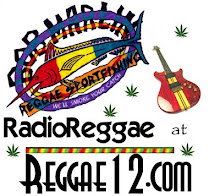For food, nature, wildlife, warm up to Jamaica
By Susan Reigler
sreigler@courier-journal.com
C-J Travel Writer
Surely the most alluring phrase to pop into one's mind in the middle of winter is "Caribbean getaway." The reality of gray days, winter-weather alerts and heating-bill sticker shock is pushed aside by visions of sun-dappled beaches, impossibly blue sea and sky, and rum-laced drinks in tall glasses.
While it looks relatively small on a global map, the Caribbean is a richly diverse area, both culturally and geographically. From tiny islands to the coastal countries of Central America, escapes there can be urban or ecological.
If you must choose just one Caribbean destination for a quick winter getaway, the 4,400-square-mile island country of Jamaica may be just the place.
Thanks to such Jamaican exports as jerk chicken, Blue Mountain coffee and reggae music, the first-time American visitor will find a few familiar features in this otherwise exotic destination.
And because of Jamaica's history as a British colony (the Brits captured it from Spain in 1654 and were in charge until autonomy was granted in 1947), the official language of the country is English -- peppered with patois catchphrases such as "No problem, mon."
But do be prepared for the rough-and-tumble of the cities. Hustlers and drug dealers often approach tourists. Therefore, many first-time visitors opt for resort stays.
Kingston
Jamaica's capital is a city of about 700,000. It's a good base of operation if your stay is limited and you want to experience the country's history, cuisine and night life, with a sprinkling of beach activities.
Reggae fans should check out the Bob Marley Museum, in a red brick house that served as the Tuff Gong recording studio. (It's Kingston's most visited tourist attraction.) Hourlong tours close with a short film about Marley's last days.
Another popular attraction is Devon House, an 1881 mansion furnished with period antiques that provides a glimpse into the island's colonial history. Two of the city's better restaurants, the Grog Shoppe and Norma's on the Terrace, are located in a former carriage house and in the courtyard.
The Grog Shoppe is famous for Sunday brunch and dishes up fare such as roast suckling pig with rice and peas. Domestic and imported beers are on tap. Norma's is at its most atmospheric at dinner, when lighting is provided by a multitude of candles, and starters such as red pea bisque are followed by jerk specialties.
Venture across Kingston Harbor to Port Royal for a tour of a now-sleepy backwater that was once the pirate capital and later the center of British naval authority in the Caribbean. A walking tour includes Fort Charles and other historic sites.
Lime Cay, 15 minutes by boat from Port Royal, is an uninhabited island with white sand beaches. Bring your snorkeling gear and a picnic.
For a more land-based experience of Jamaica's natural beauty, visit the 200,000-acre Blue Mountains-John Crow National Park, about an hour by car from the capital. A hike up Blue Mountain Peak (the island's highest at 7,402 feet) winds through coffee plantations and banana groves and into dense, bird-filled woodlands.
Montego Bay
MoBay, as it's known locally, is Jamaica's second-largest city (population 120,000) and its resort capital. From budget-conscious tourist hotels to private, upscale resorts, there are accommodations for all size bank accounts.
Downtown has a collection of late-18th- and early-19th-century stone and timber buildings, with the cobblestone-paved Sam Sharpe Square as a focal point.
The square is named in honor of the slave who, in December 1831, urged his fellow slaves to passive revolt. The Christmas Rebellion turned violent, however, with several plantations burned and more than 1,000 slaves killed. But the revolt led to British Parliament's passing the Abolition Bill in 1834.
For recreation, there are several beaches, including Doctor's Cave Beach and Walter Fletcher Beach. Both have food courts, cafes, changing areas and facilities for water sports. Reggae parties are regularly scheduled. Three championship golf courses -- Half Moon Golf Club, SuperClubs Golf Club and Tryall Club -- are just east of Montego Bay near Ironshore.
Guided tours of Montego Bay Marine Park, which stretches along the coast for almost six miles, include coral reefs and mangrove islands. Waterfowl include pelicans, egrets and herons, while the tea-colored water is home to barracuda and tarpon. (Game fishing is another activity.)
Restaurants tend to stay open into the wee hours, with music blaring and drinks flowing. The famous Pork Pit features open-air munching on jerk chicken and pork on picnic tables tucked beneath shade trees. At the upper end of the dining scale is the Houseboat Grill, a floating restaurant featuring Caribbean fusion fare.
Negril
Negril, population 4,000, is located at the western tip of Jamaica. It has the reputation of being the most laid-back city on the island. (There are nude beaches here.) But it has also, in recent years, developed a notable ecotourism industry.
This is due in large part to the Great Morass (is that a great name or what?), a dense mangrove swamp that is a refuge for rare animals and plants including crocodiles, red- footed coots, butterfly ginger and pancake lilies.
The Royal Palm Reserve, within the Great Morass, features a boardwalk that snakes through the swamp well above the jaws of hungry crocs, and a 44-foot-tall observation tower.
For those with an interest in wildlife of another sort, Negril is famous for its nightly reggae concerts. The big-name bands perform at MXIII and Roots Bamboo. Don't bother trying to find a written schedule. Concerts tend to be advertised by announcements from megaphone-equipped cars that circulate through the city's streets.
Sunday, February 12, 2006
Subscribe to:
Post Comments (Atom)


No comments:
Post a Comment